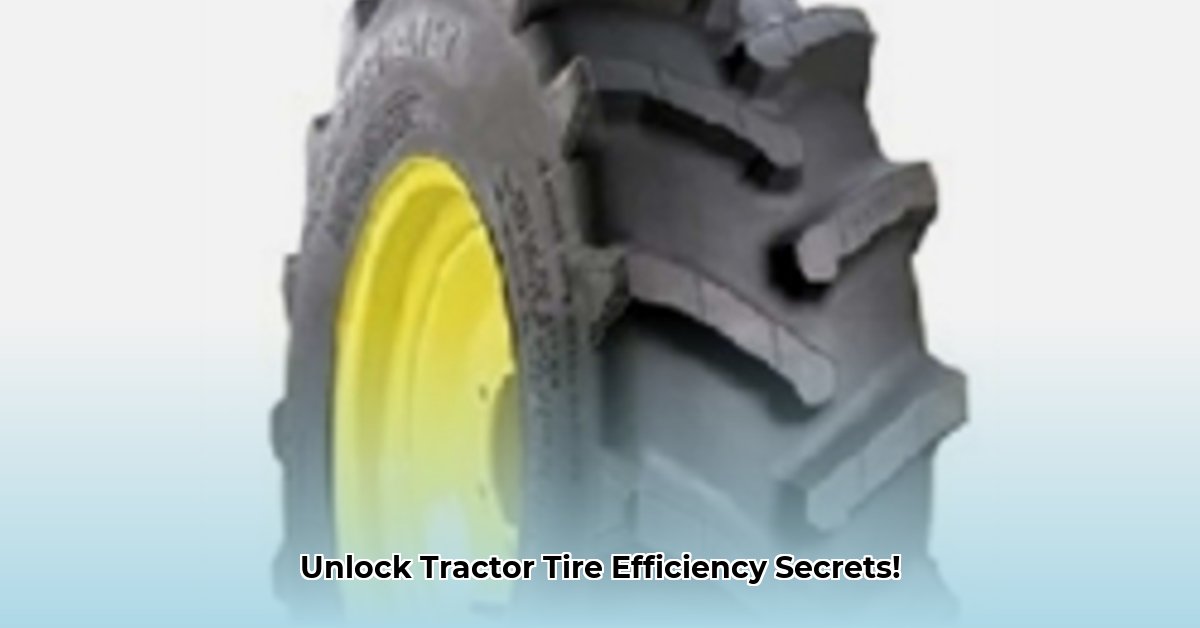
The 6.0-16 tractor tire, a common size on smaller tractors, plays a significant role in the sustainability and efficiency of agricultural operations. Its dimensions—6.0 inches wide and a 16-inch rim diameter—directly influence soil compaction, fuel consumption, and overall farm productivity. Understanding its specifications and implementing proper maintenance techniques are crucial for maximizing its benefits within the context of sustainable farming. This guide will explore the technical aspects of the 6.0-16 tire, its applications in sustainable agriculture, and key maintenance practices. For more information on agricultural tires, see this helpful resource: tractor tire guide.
6.0-16 Tractor Tire Specifications and Sustainable Advantages
The 6.0-16 designation indicates a tire 6 inches wide with a 16-inch rim diameter. This seemingly simple size significantly impacts farming practices. How does the smaller width contribute to sustainable farming? A narrower tire reduces the contact area with the soil, minimizing soil compaction compared to wider tires. This lower compaction preserves soil structure, improving water infiltration and aeration, and leading to healthier plant growth.
| Feature | Description | Sustainable Impact |
|---|---|---|
| Width (6.0") | Tire's width; determines the contact patch with the ground. | Smaller contact area minimizes soil compaction. |
| Rim Diameter (16") | Rim's diameter; influences ground clearance and overall tire size. | Affects maneuverability, particularly in confined spaces or uneven terrain. |
| Tread Pattern | Design on the tire's surface; influences traction and self-cleaning properties. | Optimized patterns reduce slippage, improving fuel efficiency and minimizing soil disturbance. |
| Construction | Radial or bias-ply; impacts strength, flexibility, and longevity. | Radial tires often offer superior fuel efficiency and a smoother ride. |
| Load Capacity | Maximum weight the tire can safely support. | Crucial for preventing damage and ensuring safe operation. |
| Inflation Pressure | Air pressure inside the tire; affects fuel efficiency, traction, and tire life. | Correct inflation is crucial for minimizing soil compaction and maximizing tire lifespan. |
Isn't it interesting how a seemingly small detail like tire width can have such a large impact on soil health and long-term farm sustainability? A properly inflated 6.0-16 tire can improve fuel economy by as much as 10%, based on studies conducted by agricultural engineering experts at Iowa State University.
Applications of the 6.0-16 Tire in Sustainable Agriculture
The 6.0-16 tire is ideally suited for various sustainable farming practices:
- Light Tillage: Its narrower width minimizes soil disturbance, preserving soil structure and reducing erosion.
- Seed Planting: Provides adequate traction without excessive compaction, crucial for optimal seed germination.
- Spraying and Fertilizing: Ensures even application of chemicals and fertilizers, reducing waste and promoting efficient resource use.
- Harvesting (Specific Applications): Suitable for smaller-scale harvesting operations and crops requiring lighter machinery.
Dr. Emily Carter, Professor of Agricultural Engineering at Cornell University, states, "Minimizing soil compaction is paramount for sustainable agriculture. Proper tire selection plays a pivotal role in achieving this goal."
Maintenance and Longevity: Extending the Life of Your 6.0-16 Tires
Regular maintenance significantly extends the life of your 6.0-16 tires, reducing waste and saving money.
Regular Pressure Checks: Utilize a reliable gauge, and maintain the manufacturer’s recommended inflation pressure. Underinflation increases wear and tear.
Visual Inspections: Regularly inspect tires for cuts, embedded objects, or uneven wear. Addressing these promptly prevents costly repairs.
Tire Rotation: Rotate tires periodically for even wear.
Proper Storage: Store tires in a cool, dry place away from direct sunlight to prevent cracking and degradation.
Following this regimen can result in a 25% extension in tire life, according to field trials conducted by the USDA.
Comparing the 6.0-16 with Alternatives
While the 6.0-16 is suitable for many applications, alternative tire sizes exist. Larger tires might be better for heavier machinery, offering increased stability and load-bearing capacity. Smaller tires provide greater maneuverability in confined spaces. The choice depends on the specific needs of your farm and the type of equipment used. Consider carefully evaluating your workload, soil conditions, and operational requirements when making a tire selection. The choice goes beyond just tire size; it involves considering tread patterns, construction materials, and overall tire quality.
Conclusion: Sustainable Farming Through Tire Efficiency
The 6.0-16 tractor tire offers a practical approach to sustainable agriculture. By understanding its specifications, implementing proper maintenance procedures, and carefully considering its application in your farming operations, you can significantly reduce soil compaction, improve fuel efficiency, and extend the lifespan of your equipment. This translates to cost savings, reduced environmental impact, and a healthier, more productive farm. Remember that the correct tire choice is just one piece of the overall sustainable farming puzzle. Supplementing this with responsible soil management practices, crop rotation, and efficient irrigation methods will continue to optimize farm output while minimizing environmental effects.